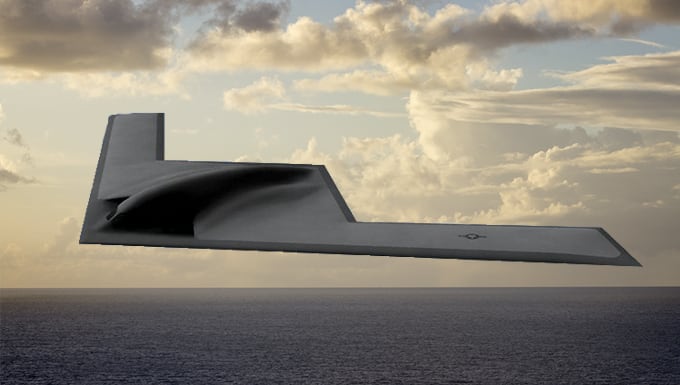WASHINGTON — The U.S. Air Force’s super secret B-21 bomber program is gliding toward a major development milestone known as the critical design review, which is set to wrap up by the end of 2018, the director of the Air Force’s Rapid Capabilities Office said Monday.
“We’ve been through the preliminary design review, so we’re on a path to go into a more critical design and move on with the production of not only the test aircraft, but if I have my way, make sure that we get the development done properly leading up to an on-time start of production,” Randall Walden said at a Mitchell Institute for Aerospace Studies event. Walden’s office, the RCO, is in charge of developing the B-21 and ensuring the program’s success.
“From my perspective, this is about producing 100 bombers, not about just getting through development,” he added. “Development is a phase that leads into the fielding of this critical need. So my focus is getting the production started, but I can’t do that until we understand what the design looks like.”
RELATED

Walden also acknowledged later that, while B-21 Raider production has not started, the office has begun component testing and put a subscale model of the bomber through wind tunnel tests.
He declined to detail the scale of the model or where it has been tested, but noted that there are relatively few wind tunnel facilities in the United States, such as the Propulsion Wind Tunnel Facility in Arnold Air Force Base, Tennessee.
“Any aircraft program that’s going to go through development, you’re going to do wind tunnel testing, and we’re no different,” he said.
“You’re going to go from an estimate on a piece of paper and drawings to the right things that it would take to get you to build out the system, and wind tunnel testing is one of them. We’re following that logic because it makes sense from an engineering point of view.”
On Twitter, multiple aerospace wonks, including Jeremiah Gertler of the Congressional Research Service and Tyler Rogoway of The Drive, noted that the wind tunnel tests had likely happened far earlier into the program to enable the first B-21 unit to begin fielding around 2025.
The Air Force wants to buy at least 100 B-21s. It awarded Northrop Grumman a cost-plus engineering and manufacturing development contract in October 2015, which was estimated to have a value of a $21.4 billion in 2010 dollars. The service has said each aircraft is set to cost about $550 million in 2010 dollars, and it is using a separate fixed-price contract vehicle for the production phase.
Warden said Monday that four bomber pilots from Air Force Global Strike Command are embedded within the program office to provide feedback to improve the B-21 and to help relay information to command head Gen. Robin Rand, who meets with Warden every month for a status update on the program.
And although the RCO is located in Washington, D.C., it also relies on engineers and experts from the Life Cycle Management Center at Wright-Patterson Air Force Base, Ohio, and the Air Force Sustainment Center at Tinker Air Force Base, Okla., he said.
Beyond that, very little information about the program is publicly available due to its high level of classification, including the total value of contracts given to Northrop.
Last year, Gen. Stephen Wilson, the Air Force’s vice chief of staff, told lawmakers that the B-21 had completed its preliminary design review and was proceeding on cost and schedule.
And in March, Rep. Rob Wittman, R-Va., chairman of the House Armed Services Committee’s Seapower and Projection Forces Subcommittee, expressed satisfaction with the trajectory of the program, even as he noted that the Pratt & Whitney-built engine was experiencing growing pains.
The issue, according to Wittman, seemed to center around the flow of air through the B-21 engine. Pratt & Whitney has not divulged the model of engines used to power the Raider, but it is thought that the bomber will use a variant of the F135 built for the F-35.
Those engine problems were found as the program began moving from paper design to testing real hardware, and have since been resolved, said Warden.
“Prior to anything being built, it’s predictive. So engineering predictions are made; the moment you start getting some insight into actual lab testing, it informs you to what the answer should be. So once we had that data, it was fairly easy to go: ‘Here’s the path we’re on,’ ” he said.
“We’re in that phase today of getting a good feel for each of the components, how they’re going to be integrated in and the engineering associated with that integration.”
Correction 6/27/18 at 1:51 p.m. EST: A previous version of the story misstated the location of Tinker AFB, which is in Oklahoma.
Valerie Insinna is Defense News' air warfare reporter. She previously worked the Navy/congressional beats for Defense Daily, which followed almost three years as a staff writer for National Defense Magazine. Prior to that, she worked as an editorial assistant for the Tokyo Shimbun’s Washington bureau.




